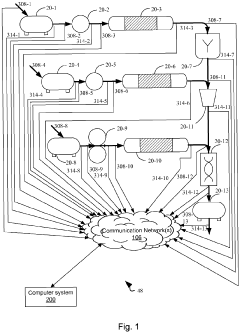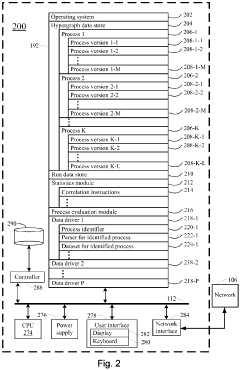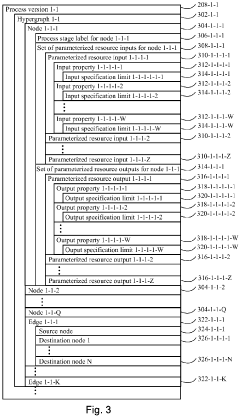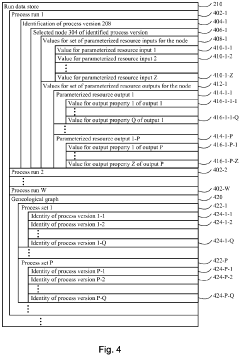Research on improving manufacturing stability through automation technologies - Eureka
OCT 8, 20243 MIN READ
Generate Your Research Report Instantly with AI Agent
Patsnap Eureka helps you evaluate technical feasibility & market potential.
Automation Tech Development and Goals
The primary objective is to enhance manufacturing stability and efficiency through the adoption of automation technologies. Automation has the potential to streamline processes, reduce human errors, and improve overall productivity. Key areas of focus include robotic systems for material handling and assembly, machine vision for quality inspection, and industrial control systems for process monitoring and optimization. Successful implementation of automation can lead to consistent product quality, minimized downtime, and increased operational flexibility to meet changing market demands.
Market Demand for Manufacturing Stability
- Manufacturing Stability Challenges
Inconsistent product quality, high defect rates, and frequent production line stoppages are common issues affecting manufacturing stability. These challenges lead to increased costs, reduced efficiency, and customer dissatisfaction. - Market Demand for Improved Stability
There is a significant market demand for solutions that can enhance manufacturing stability, as companies across various industries seek to optimize their production processes, reduce waste, and improve overall profitability. - Benefits of Stable Manufacturing
Achieving manufacturing stability can result in numerous benefits, including:- Consistent product quality and reduced defects
- Increased production efficiency and throughput
- Lower operational costs and waste reduction
- Improved customer satisfaction and brand reputation
- Market Drivers
Key drivers fueling the demand for manufacturing stability solutions include:- Stringent quality standards and regulatory requirements
- Increasing competition and the need for cost optimization
- Adoption of lean manufacturing principles and continuous improvement initiatives
- Advancements in automation and Industry 4.0 technologies
Current State and Challenges in Automation
- Automation Adoption Challenges
Lack of skilled workforce, high initial costs, and resistance to change hinder widespread automation adoption across industries. - Integration Complexities
Integrating automation systems with legacy equipment and processes poses significant technical and operational challenges. - Cybersecurity Risks
Interconnected automation systems are vulnerable to cyber threats, necessitating robust security measures. - Standardization Issues
Lack of industry-wide standards for automation technologies and protocols complicates interoperability and scalability. - Regulatory Compliance
Stringent regulations and safety standards in certain industries can impede automation implementation.
Key Players in Automation Technology
The market for manufacturing automation technologies is driven by the demand for efficiency and precision. Established leaders like Siemens, Rockwell Automation, and Mitsubishi Electric, along with innovative players like FANUC and Robert Bosch, are at the forefront. The market is growing, with significant investments in R&D and infrastructure.
Siemens Industry Software, Inc.
Technical Solution: Siemens offers integrated automation and software solutions to optimize production processes, reduce downtime, and improve efficiency.
Strength: Comprehensive integration. Weakness: High implementation cost.
Rockwell Automation Technologies, Inc.
Technical Solution: Rockwell Automation provides robust and scalable solutions to enhance manufacturing stability and efficiency.
Strength: Robust and scalable. Weakness: Complex integration.
Core Innovations in Manufacturing Automation
Systems and methods for process design and analysis
PatentPendingEP3910519A1
Innovation
- Maintaining a hypergraph data store: the scheme introduces a hypergraph data store that captures information about different stages of processes, including parameters for resource inputs, output properties, and specification limits. this data store allows for the visualization of data against evolving maps of experimental processes, highlighting quality issues and opportunities.
- Run data store: in addition to the hypergraph data store, the scheme includes a run data store, which captures process runs and their associated inputs and outputs. this data store enables the analysis of queries to identify inputs and outputs present in the run data.
- Statistics module: the scheme also includes a statistics module that aggregates and contextualizes data from the hypergraph and run data stores. this module provides insights and analysis to inform process stabilization efforts, such as identifying trends, causal relationships, and potential areas for improvement.
Regulatory Landscape for Manufacturing Automation
Automation technologies have the potential to significantly improve manufacturing stability by reducing human errors, increasing process consistency, and enabling real-time monitoring and adjustments. Key areas include robotic systems for assembly and material handling, machine vision for quality inspection, and industrial control systems for process optimization. Emerging technologies like artificial intelligence, Internet of Things, and digital twins offer further opportunities for predictive maintenance, adaptive control, and virtual simulations to enhance manufacturing resilience and flexibility. However, challenges such as system integration, data security, and workforce reskilling need to be addressed for successful implementation.
Environmental Impact of Automation Technologies
Automation technologies have the potential to significantly improve manufacturing stability by reducing human errors, increasing process consistency, and enabling real-time monitoring and adjustments. Key areas include robotic systems for assembly and material handling, machine vision for quality inspection, and industrial internet of things (IIoT) for data collection and analysis. Challenges involve integrating diverse systems, ensuring cybersecurity, and managing the transition to automated workflows. Potential innovations may involve advanced robotics, artificial intelligence, digital twins, and human-machine collaboration models. A comprehensive strategy considering technical feasibility, cost-benefit analysis, workforce training, and change management is crucial for successful implementation.
Unlock deeper insights with Patsnap Eureka Quick Research — get a full tech report to explore trends and direct your research. Try now!
Generate Your Research Report Instantly with AI Agent
Supercharge your innovation with Patsnap Eureka AI Agent Platform!



